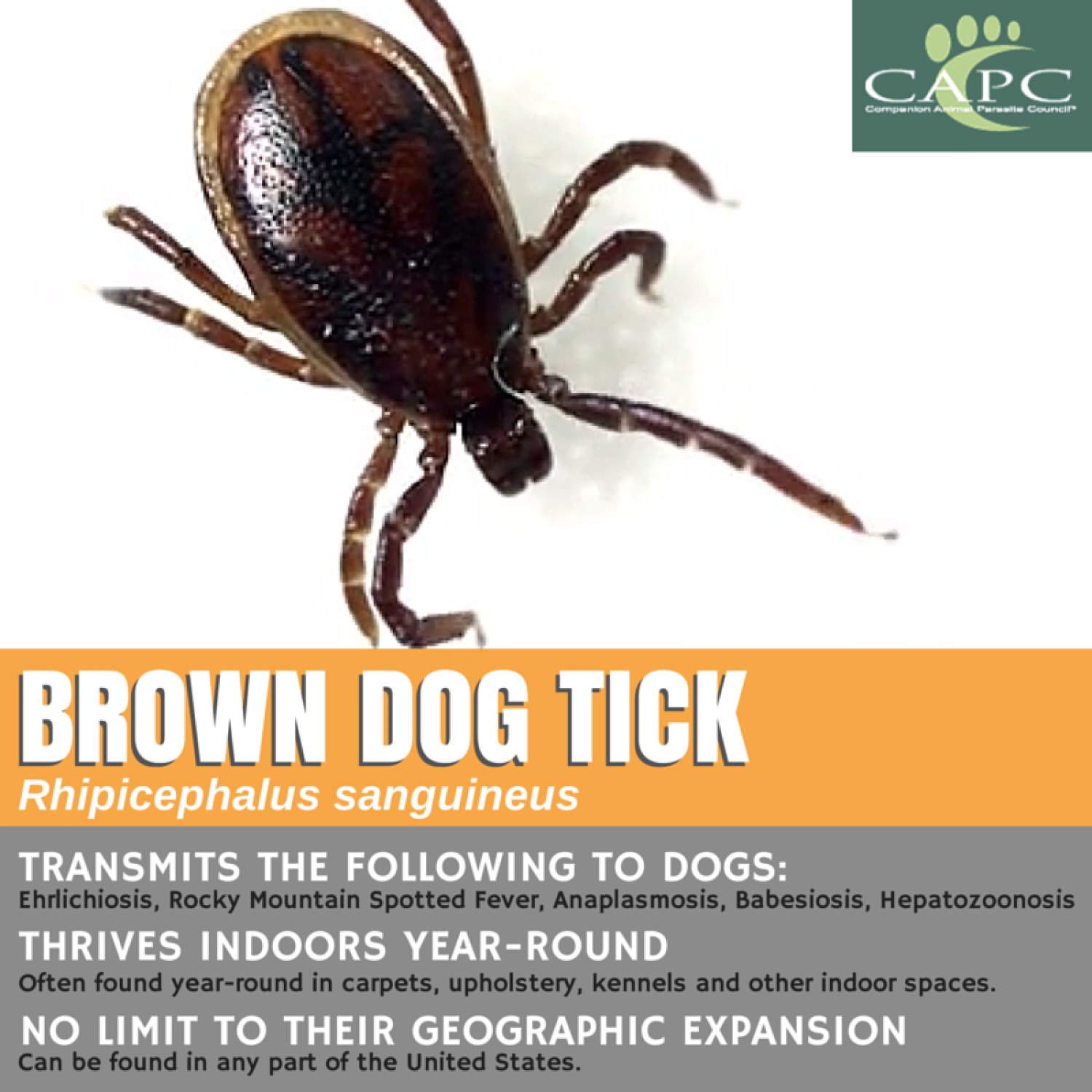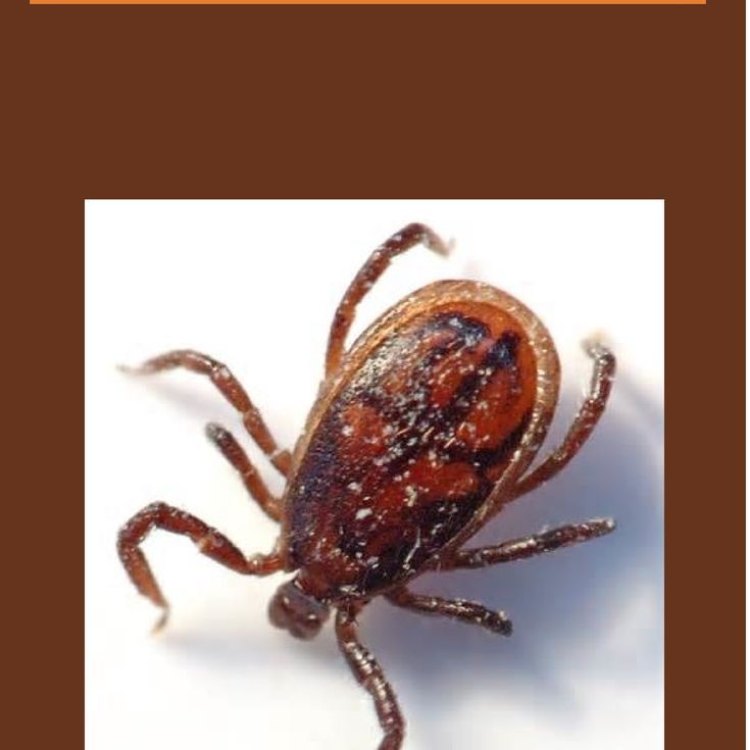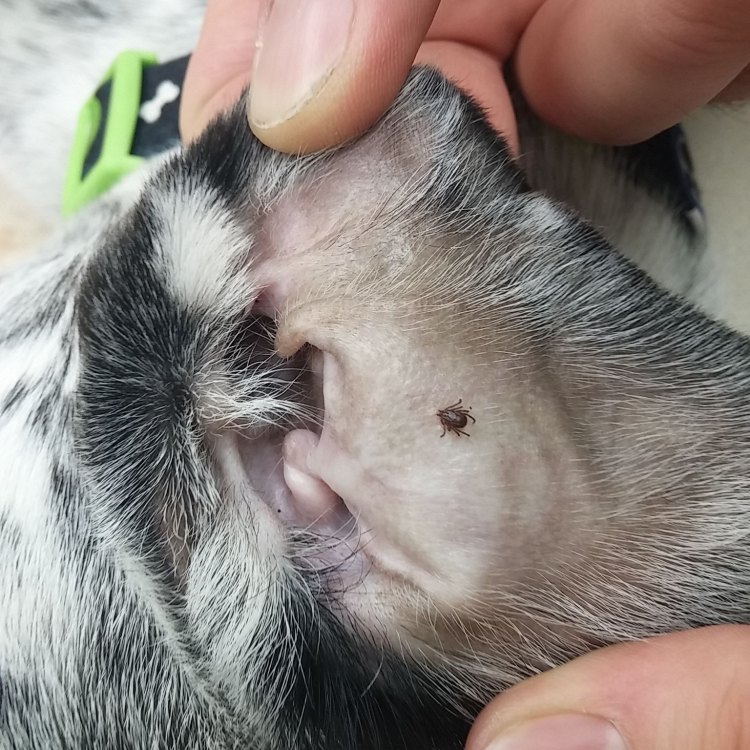
Brown Dog Tick
2.8 to 3.6 millimeters
The Brown Dog Tick, an oval-shaped tick from the Ixodidae family, is a subtle but dangerous parasite. Ranging from 2.8 to 3.6 millimeters, this tick is commonly found in warm and humid regions worldwide. Protect your pets from this tiny but harmful creature by regularly checking for them and using appropriate preventatives. Stay safe, pet owners! #BrownDogTick #Ixodidae #TickAwareness
Animal Details Summary:
Common Name: Brown Dog Tick
Kingdom: Animalia
Habitat: Urban and rural environments
The Intriguing World of the Brown Dog Tick
Ticks, as we know them, are small, blood-sucking arachnids that have been around for millions of years. They are commonly associated with woodland areas and are known to make a meal out of deer, dogs, and even humans. However, have you ever heard of the Brown Dog Tick? This parasitic tick may not be well-known, but it has some fascinating characteristics that make it worth learning about.The Brown Dog Tick, also known by its scientific name Rhipicephalus sanguineus, belongs to the family Ixodidae Brown Dog Tick. It can be found in various warm and humid regions around the world, and while its country of origin is unknown, it has been widely distributed due to its ability to thrive in both urban and rural environments. This resilient tick has adapted to live and reproduce in a variety of habitats, making it a widespread pest.
The Anatomy of a Brown Dog Tick
Before delving into the interesting aspects of the Brown Dog Tick, it's essential to understand its physical characteristics. As an arachnid, the Brown Dog Tick belongs to the Kingdom Animalia, Phylum Arthropoda, and Class Arachnida. It is grouped into the Order Ixodida, along with other hard-bodied ticks.The body shape of this tick is oval, elongated, and flat. It has eight legs and its head and body are fused together into one section, giving it a unique appearance. The Brown Dog Tick is typically brown in color, which helps it blend into its surroundings and make it challenging to spot. Its size varies, but on average, it measures between 2 Basilisk Lizard.8 to 3.6 millimeters in length.
A Parasitic Feeding Method
One of the most notable characteristics of the Brown Dog Tick is its feeding method. As a parasitic tick, it depends on a host animal for its survival. This tick is often found on dogs, although it can also feed on other warm-blooded animals, including humans. It feeds on the blood of its host by attaching itself to the skin and using its mouthparts to pierce the skin and extract blood.Unlike other ticks, the Brown Dog Tick has a unique adaptation that allows it to feed on its host for long periods, sometimes even for years. The mode of attachment is also unique, as this tick prefers to attach itself to a single host and remain there, unlike other ticks that may detach and reattach on different hosts. This makes the Brown Dog Tick a dangerous pest, as it can cause harm to both animals and humans if not removed promptly.
Location and Distribution
As mentioned earlier, the Brown Dog Tick has a widespread distribution, mainly due to its adaptability to different environments. This tick can be found in various parts of the world, including the United States, Mexico, Brazil, South Africa, and Australia. It prefers warm and humid regions, making it more common in countries with tropical and subtropical climates.In the United States, the Brown Dog Tick is most prevalent in the southern states, particularly in Texas, Arizona, and California. It has also been reported in parts of the Midwest and the East Coast. However, due to its ability to survive in indoor environments, it can also be found in colder regions with proper heating.
The Brown Dog Tick and Disease Transmission
One of the most significant concerns regarding ticks, in general, is their potential to transmit diseases. While not as common as other tick species, the Brown Dog Tick can also carry and transmit diseases to its host. The most notable disease associated with this species is canine ehrlichiosis, a bacterial infection that can cause fever, lethargy, and anemia in dogs.The Brown Dog Tick can also carry and transmit another bacterial infection called Rocky Mountain spotted fever, which can cause severe illness in dogs and humans. While the transmission of this infection is rare, it is essential to keep an eye out for any symptoms if you or your pet have been bitten by a Brown Dog Tick.
Prevention and Control Measures
As with any other tick species, it is vital to take precautions to prevent infestations of Brown Dog Ticks. One method is to regularly check yourself and your pets for any signs of ticks, especially after spending time outdoors. Wearing protective clothing, such as long pants and sleeves, can also help prevent tick bites.If you find a Brown Dog Tick on your pet, remove it immediately using tweezers, and clean the area afterward with rubbing alcohol. It is also recommended to use tick preventatives for your pets, such as spot-on treatments and collars. These preventative measures can help reduce the risk of tick infestations and diseases transmitted by ticks.
Final Thoughts
While the Brown Dog Tick may not be as well-known as other tick species, it is essential to be aware of its presence and potential risks. As a resilient and adaptable parasite, it can pose a threat to both humans and animals. Taking preventative measures to avoid tick bites and promptly removing ticks can help keep you and your furry friends safe from the dangers of the Brown Dog Tick.

Brown Dog Tick
Animal Details Brown Dog Tick - Scientific Name: Rhipicephalus sanguineus
- Category: Animals B
- Scientific Name: Rhipicephalus sanguineus
- Common Name: Brown Dog Tick
- Kingdom: Animalia
- Phylum: Arthropoda
- Class: Arachnida
- Order: Ixodida
- Family: Ixodidae
- Habitat: Urban and rural environments
- Feeding Method: Parasitic
- Geographical Distribution: Worldwide
- Country of Origin: Unknown
- Location: Brown Dog Ticks can be found in various warm and humid regions around the world.
- Animal Coloration: Brown
- Body Shape: Oval
- Length: 2.8 to 3.6 millimeters

Brown Dog Tick
- Adult Size: 2.8 to 3.6 millimeters
- Average Lifespan: 2 to 3 years
- Reproduction: Sexual
- Reproductive Behavior: Mating occurs off the host
- Sound or Call: None
- Migration Pattern: Non-migratory
- Social Groups: Solitary
- Behavior: Ticks are mainly active during warm months and tend to hide in sheltered areas when it gets colder.
- Threats: Ticks can transmit diseases to humans and animals, including Lyme disease and tick-borne encephalitis.
- Conservation Status: Not applicable
- Impact on Ecosystem: Ticks play a role as disease vectors and can have significant impacts on the health of humans and animals.
- Human Use: None
- Distinctive Features: 8 legs, oval body shape, and distinctive mouthparts called hypostome.
- Interesting Facts: Brown Dog Ticks are known to infest homes and kennels, and can survive indoors for extended periods of time.
- Predator: Ticks have various natural predators, including birds, reptiles, and amphibians.

Rhipicephalus sanguineus
The Brown Dog Tick: A Common Menace and Disease Carrier
Ticks are small but resilient arachnids that are often overlooked but can cause big problems for both humans and animals. Among the various species of ticks, the Brown Dog Tick stands out as one of the most common and widespread, found in many parts of the world including the United States, Europe, and Australia. In this article, we will explore the unique features and behaviors of the Brown Dog Tick, its impacts on the ecosystem, and its role as a disease carrier.At first glance, the Brown Dog Tick may not seem like a formidable threat PeaceOfAnimals.Com. Measuring only 2.8 to 3.6 millimeters in adult size, it is smaller than other species of ticks. However, what makes it a cause for concern is its ability to infest homes and survive indoors for extended periods of time. Ticks are not only found in outdoor areas such as forests and meadows, but they can also find their way into our homes. This is particularly true for the Brown Dog Tick, which prefers to live in warm and sheltered areas.
The average lifespan of a Brown Dog Tick is 2 to 3 years, and it is a solitary creature, usually found alone rather than in social groups. Like other ticks, it exhibits sexual reproduction, where mating occurs off the host. This means that ticks do not mate while feeding on a host, but rather, they mate on the ground before attaching themselves to a host Bernese Mountain Dog. This unique reproductive behavior is essential for the spread of ticks, as male ticks can pass on diseases to female ticks during mating.
Speaking of diseases, ticks are more than just a nuisance. They are well-known for their ability to transmit various diseases to humans and animals through their bites. In the case of the Brown Dog Tick, it is known to carry pathogens that can cause Lyme disease and tick-borne encephalitis. These diseases can have serious and long-lasting effects on the health of those who get infected. Therefore, it is crucial to take preventive measures and remove ticks safely if you come into contact with them.
Interestingly, ticks do not make any sound or call, despite their tiny size. They are also non-migratory, meaning they do not move from one place to another in search of a new host. Instead, they tend to stay in the same area where they first hatched, making it easier for them to infest homes and spread diseases.
Ticks are mainly active during warm months, from spring to fall, and tend to hide in sheltered areas when the temperature drops. This is why you are more likely to encounter them in the summer when you spend time outdoors. They have a distinct oval body shape and possess eight legs, which help them to cling onto hosts and climb up to their preferred feeding spots. One of the most unique features of the Brown Dog Tick is its mouthparts called hypostome, which are used to pierce the skin and feed on the blood of its host.
While ticks may seem like a constant menace to humans, they do serve a purpose in the ecosystem. They are disease vectors and can have significant impacts on the health of both humans and animals. Ticks play a vital role in keeping animal populations in check, preventing them from getting too large and causing ecological imbalances. However, they also have a negative impact, as they can transfer diseases from one host to another, disrupting the natural balance of the ecosystem.
Ticks also have various natural predators that help to keep their population in check. Birds, reptiles, and amphibians are some of the creatures that feed on ticks, keeping them under control in the wild. This natural predation is crucial in maintaining a healthy balance in the ecosystem and reducing the risk of tick-transmitted diseases.
Despite their small size, ticks continue to pose a threat to humans and animals. This is why it is essential to take preventive measures to protect ourselves and our pets from tick bites. Avoiding areas with tall grass, using insect repellents, and wearing appropriate clothing when venturing into tick-prone areas are some of the ways to reduce the risk of tick bites. If you have a yard, make sure to keep it well-maintained, as ticks thrive in long grass and other vegetation.
In conclusion, the Brown Dog Tick may seem like a small and insignificant creature, but it can cause significant harm to our health and the ecosystem. With its unique features, behaviors, and role as a disease carrier, it is essential to take precautions to prevent tick bites and infestations. By understanding more about these tiny arachnids, we can better protect ourselves and our surroundings from their impacts.

The Intriguing World of the Brown Dog Tick
Disclaimer: The content provided is for informational purposes only. We cannot guarantee the accuracy of the information on this page 100%. All information provided here may change without prior notice.












